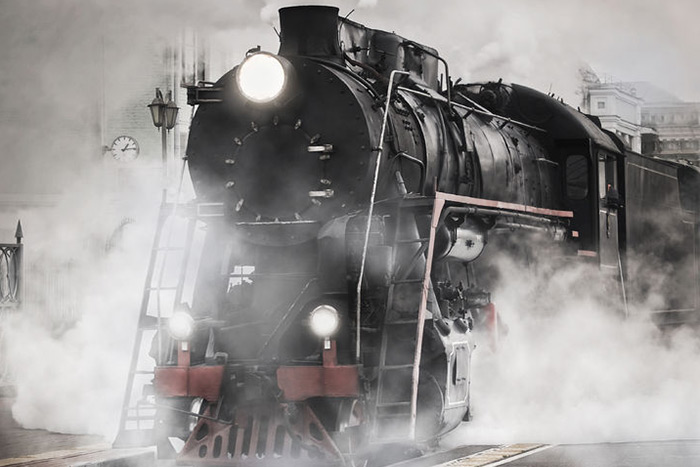The Last Steam Engine on the LIRR Through the Hamptons

I accompanied some friends to the East Hampton railroad station to see them off to New York on a Sunday morning just before Christmas. There was snow on the ground and a festive feeling in the air. About a hundred people, bundled up in the cold, stood silently on the platform, peering down the tracks toward Amagansett, from whence the train would soon come. After a while an announcement came over the loudspeaker.
“The 11:52 train to Manhattan is about to arrive, on time. Please step back from the platform edge.”
A few minutes after that, a clang, clang, clang sound filled the air and just to our west, the 15-foot tall wooden gates straddling Newtown Lane at the crossing began to lower and the red lights on those gates began to blink.
The people stirred.
Maybe it was the snow on the ground or the Christmas ornaments in the store windows, but somehow I was transported back in time to a Friday afternoon in 1955. I was a teenager then, and my father had driven my younger sister and me to the station to greet my mother, who was arriving from New York that snowy day.
Gas pumps were located on the sidewalk of Newtown Lane about a hundred feet up from Main Street (to about where The Monogram Shop is today). That shop was not there, of course. It was the police station. Next door was Speed’s Luncheonette and across the street was Eddie’s Luncheonette and, next to that, the post office. Christmas decorations were in the windows.
My dad had a new Pontiac sedan with tail fins. smokey exhaust came out the back. There were no such things as seat belts. Nevertheless, Dad stayed in his lane, guided by a single white line down the center of the street. We passed the parked cars. When we got to the station, we got out and walked to the platform.
Pretty soon, the clang, clang, clang began to sound from the 15-foot white gates on each side of Newtown Lane at the crossing. The gates slowly lowered. The same red lights blinked.
Fifty people in heavy coats stood on that platform. And then all heads turned as the wail of a steam whistle sounded from Bridgehampton off in the distance. After a while, the train appeared. It made a tremendous racket coming in, metal clanking against metal, puffs of black smoke billowing out the stack. As the engine slid by where we were standing, the engineer waved to us, and pulled the chain to let out another blast on the steam whistle. Behind him, the fireman, all hot and sweaty, his back to the engineer, leaned on his shovel and stared at the flickering red light of the coal furnace. The whistle tooted again and the train slowed and then came hissing to a complete stop. Toward the back were freight cars. At the very back was a caboose. In the front were the parlor cars. This was the famous Cannonball, which only came in once a week, on a Friday. And now, off hopped the uniformed conductors. And there was my mom.
That year was the last year steam engines pulled the Long Island Rail Road trains. After that, for many years, diesel engines did the job, warning of their arrival with great, mournful truck air-horn sound and the sweet smell of diesel fuel. The service declined. Soon there was no more parlor car service.
Now, here, on December 17, 2017 at 11:35 a.m., coming into view around the bend from Amagansett, was the double-decker train with the electric locomotive at the front, roaring away. It pulled in and came to a halt. The gates astride Newtown Lane kept clanging. Motorists in BMWs, Mercedes and Lincolns waited patiently. And the people—watch the gap—climbed on.
A few conductors got out. One was a woman; another, a man. They looked up and down the platform, waiting patiently.
I noticed these two conductors each wore the same black conductor hats from all those years ago, with the shiny black leather band and the silver letters reading CONDUCTOR.
A whistle sounded, the engine roared and, slowly, the big double-decker lumbered off toward Bridgehampton and beyond.



